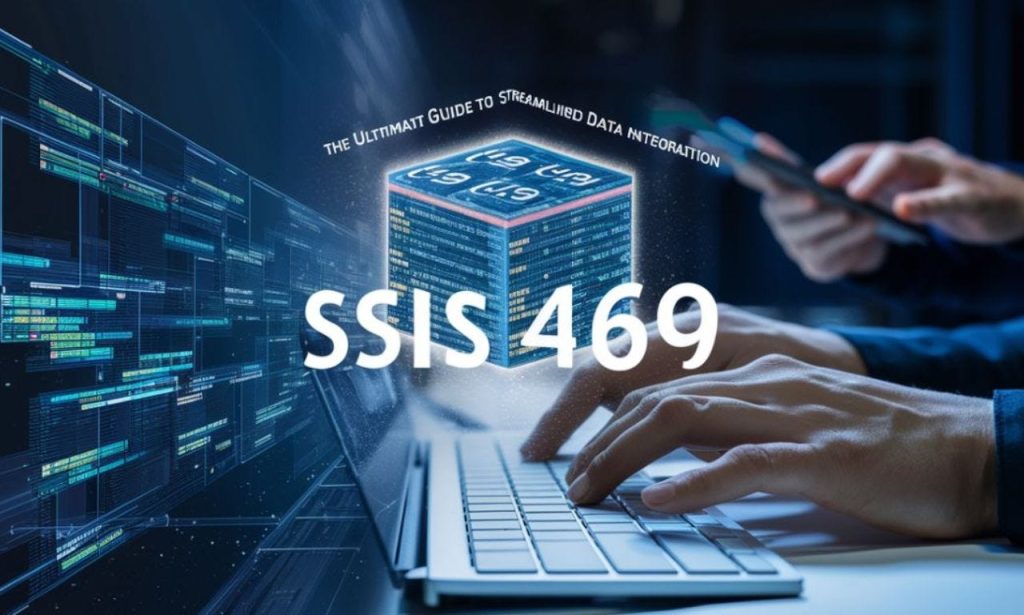Data integration is at a higher risk of being interrupted by unplanned exceptions, likening it to what seems like aimlessly wandering through thick fog. What poses some of the biggest challenges is the SSIS 469 exception since it can stop entire workflows and disrupt pre-planned projects. That is why, no matter the experience level you have when it comes to SQL Server Integration Services (SSIS), being able to effectively navigate these waters will ensure operations remain smooth. This post aims to unravel the mystery behind SSIS 469 exceptions while empowering you with techniques to address them effectively, meaning we’re turning challenges into chances. Now, when tackling data integration challenges, always remember that achieving transparency is vital to find a sure way toward actual outcomes.
Introduction to SSIS 469 Exceptions and their impact on data integration
Just like with any issue that comes with data integration, errors pose one of the biggest activities to workflows and suit do lessons. The SSIS 469 exception is just one area that poses risk to the smooth data processing many developers seek. Striving to resolve this issue comes with additional integrations that result in saving both time and effort, making it the ideal target for those looking for quick solutions. However, once their attention is shifted towards the reduction of operational workflow interruptions, SSIS 469 exceptions tend to spike, blocking the user’s entire set of automated tools.
Over time, disturbing these levels of work comes at the cost of disturbing the data processes that end up gravely impeding overall workflow productivity, making data accuracy, dependability, and completeness the central focus for using processing systems.
If you are an advanced user or a beginner with SQL Server Integration Services (SSIS), encountering this specific error can be somewhat bothersome. Don’t panic! These exceptions can be dealt with when you have the right strategies and tools in hand. We will explore how to determine the underlying factors and realize goals within solutions that guarantee success in data integration.
The rationale of SSIS 469 exceptions error
Issues in data conversion or data transformation processes are noted to stem these SSIS 469 exceptions errors. When there is some sort of disruption within the integration services package and the data type does not conform or match, an exception is thrown.
This error could also arise from failed source connections. If a connection manager cannot fetch this data because of some network problem or connectivity shuffles or even improperly designated parameters, then there is the possibility of an SSIS 469 error appearing.
These types of errors may also result if there is insufficient memory reserved during execution. An attempt by a package to process a large amount of data without the appropriation of needed resources becomes necessary and leads to exceptions.
Additionally, simple logical mistakes within transformations tend to complicate things further. If the logic included with respect to the data coming in is not consistent, then a fair share of problems leading to generation of SSIS 469 exceptions is standard.
Streamlining becomes easier when the core causes are effectively understood, saving valuable time during troubleshooting scenarios.
Guidelines for spotting and diagnosing SSIS 469 exceptions
Understanding the SSIS 469 exception can be complex. Pay attention to the messages that contain the most pertinent error details because they can often point to an expected issue’s root.
Analyze your data sources and destination configuration. These exceptions tend to show up due to misconfigurations. Make sure that all the required connections are properly configured and accessible.
Always make use of SSIS logging features to capture verbose logging data during the execution of the package. That information can help know where the failure starts.
You might also consider running the debug mode for the package. This allows you to go over every task one by one and identify those tasks that perform outside their set parameters.
A good alternative method is isolating the components one by one. Helping you refrain from being overwhelmed by many variables at the same time, this allows you to know exactly the part that causes the exception.
And, feel free to get help from the community. The community might have useful information that can greatly solve your issue while you try to assist others.
Resolving SSIS 469 exceptions using available tools and resources
When dealing with SSIS 469 exception, utilizing the built-in tools readily available will help big deal. Some features provided by SQL Server Integration Services aim solely to ease the troubleshooting process.
Begin with Data Viewer to supervise data movement through your pipeline. This tool aids in pinpointing where an exception might be happening in actively and instantly provides data insights.
Moreover, the package event and error tracking features of the Logging functionality are immensely useful. Different logging levels can be enabled to capture intricate details of data during execution. Log entries need to be scrutinized as they often contain answers to underlying SSIS 469 exceptions.
In addition, the set Error Output option provides for exceptional progress management of processing error rows and is important. Redirecting error rows to output streams allows for their independent analysis without stopping the entire package execution.
Aside from simplifying the debugging processes, these integrated tools serve to improve the overall effectiveness in managing SSIS 469 issues.
In advance of SSIS 469 exceptions, establishing prevention best practices requires foresight. Well organized and clearly defined data flow tasks aid in avoiding the need for unsolvable issues in the future.
Keep regular checks on data source and destination springs. There is a chance of emerging unsought-after and unexplained issues from changes made to the source systems and schemas.
Incorporate advanced error management into your packages. Use event handlers appropriately to catch certain errors early enough to give a chance for corrective action before they blossom into greater issues.
Don’t underestimate the power of testing. Always validate your SSIS packages in an intermediate testing environment prior to deployment. This practice is useful in identifying issues that could emerge while other workflows are running in production.
Lastly, maintain documentation so that they are current and readily available to everyone on the team. Effective communication strategies ensure all team members know what to do for frequently encountered problems, eliminating confusion and enabling prompt action when things go haywire.
SSIS 469 Exception Misconceptions
A good number of people think SSIS 469 exceptions are an outcome of coding problems which is not always be the case. Environmental elements and configuration settings can also be factors influencing these exceptions alongside coding issues.
Yet another misconception is that an SSIS 469 exception is triggered, extensive work is required to resolve it. The reality is that many instances can be addressed with minor tweaks and with monitoring the information flow closely.
A section of users believes all SSIS packages will automatically create these exceptions over and over again. However, the occurrence of these exceptions can be greatly lessened through effective design, rigorous testing, and effective design.
Finally, there is a misconception that only advanced developers encounter obstacles with SSIS 469. These exceptions are also met by novices; learning them is a stage towards mastering SQL Server Integration Services.
Conclusion
While the understanding of SSIS 469 exceptions can be intimidating, with a solid knowledge base effective control becomes easy. Grasping the essence of these errors and their repercussions on data integration systems gives a starting point towards accurate troubleshooting.
Then you can pursue identifying the root causes. In time, you’ll address these challenges seamlessly. The use of inbuilt guides will accelerate the resolution.
Beyond avoiding potential issues, adopting preventative best practices contributes to a more resilient data framework. Combating common myths regarding SSIS 469 exceptions will additionally increase your confidence within this space.
Use provided guidance to reshape your perspective with regards to SSIS 469 exceptions. These experiences will provide a chance to not just become proficient, but to develop dexterity with rapid issue resolution and mastering them all in your evolving data integration narrative.



